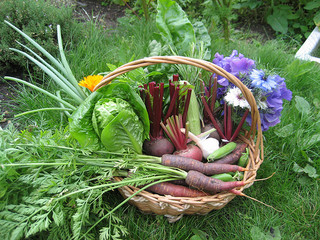I recently wrote a post about my aims and goals for 2015, and beside my laptop there is a serious plan of action for me for the upcoming year.The kids are in school, the sun is shining through the window, the dishes are not sitting in the sink and the Christmas tree has been removed. No distractions, no excuses, I am ready and primed for action….. right? WRONG!
I am lacking some very important factors…. energy, creativity and motivation!
In fact I am standing on the precipice of disappointment and failure. It is half way through the second week “back to work/school/life” after Christmas and I am pretty sure I am not alone. Before I give up on myself and my abilities, bin the plans and ditch the diaries, I have decided on a different approach.
I will arm myself with knowledge, because understanding why I feel like this will help me to accept it and help me to pass through it, so I won’t end up “throwing the baby out with the bath water”.
Diet
Why the lack of energy? Well, is this one really surprising? For most of us we just have to look at our diet over the last few weeks… sugar is probably high on the consumption list.
Originally sugar does give us energy, it causes a rapid peak in blood sugar levels. It can be quite similar to a caffeine hit. With every high there comes a low and for sugar that usually happens within an hour or so. A hormone called insulin is released in response to the high levels of blood sugar. Insulin instigates the uptake of sugar from the blood to the cells, resulting in low levels of blood sugars, fatigue, weakness and hunger. On top of all that, the cells will convert the sugar they do not use directly as fuel into fat, as it is lighter and easier to store in the body.

In general, the food we eat over the holiday season, although tasty, often has the overall effect of lowering our mood. Protein rich diets for example (how much turkey did you eat?) can lower our serotonin levels and leave us feeling low. Carbohydrates can increase serotonin levels, but, if eaten with protein, can have the opposite effect… back to that serotonin slump again.
So the lack of energy is not exactly surprising.
Exercise
For most of us Christmas is about doing very little, exercise wise. I am a firm believer in taking time off and just resting for a while and those dark days at the end of the year seem like a good time to do so. The lack of exercise does, however, come at a cost… not only does regular exercise boost our mood, our energy levels and our general wellbeing, it can also increase our creativity.

Considering the fact that I barely left the house for much of the Christmas, it is little wonder that I am feeling low in mood and motivation.
Change of body clock
Then there is the change to our body clocks. Most of us don’t get up as early in the morning, if we don’t have to. Even the children tend to sleep a little later (if we are lucky) because they too are staying up later every night. So we shift our body clocks on an hour or two and feel like we are recharging the batteries. The only problem is, once work and school resume, we need to jolt our bodies back into that early rise again.
The more clever and organised among us may do this in a gradual way but I inevitable cling to it until the very last second and then just go “cold turkey” on the first morning back after the holiday; Not exactly conducive to good energy levels and motivation.

Motivation
We have just established that I am tired, my body clock is out of whack and that my diet has made me sluggish. Not exactly great motivators. So how can I improve things? I came across a really interesting article all about the science of motivation. To understand motivation, both lacking and encouraging, we need to take a look at the neurotransmitter dopamine.
Dopamine is commonly linked with triggering pleasurable feedback and reward within the body. Its true role goes a little deeper than that as it is also actively involved in controlling mood, attention, behaviour, memory and motivation. The complex fine-tuning of the effect of dopamine on our bodies comes with examining the route the neurotransmitter takes within the signalling pathways of the brain. If we imagine these pathways as a very complex rail system. The tracks the dopamine train follows, along with the individual stations the train passes through, dictate the overall response. When dopamine reaches certain parts of the brain, it signals feedback to anticipate reward or predict a particular outcome. This creates the motivation to act, rather than the reward for acting.
Spikes in dopamine levels have been recorded in situations of high stress, coming before any reward and likely to create motivation to action to reach a certain outcome.
This knowledge is very interesting but how does it help to motivate us when we are in a slump? By knowing how it works we can manipulate the system; create small, achievable tasks that will result in a drip feed of dopamine within the brain. As each small task is performed the levels of dopamine will increase and so too, hopefully will our motivation. This system certainly got me through this blog post, when the task appeared too big I broke it down into words, sentences, adding images, choosing title until eventually the motivation increased, the reward feedback kicked in an the paragraphs began to add up.
In other words, I took it in baby steps, allowing myself feel the individual reward as each step was achieved.

How does all this help me with my New Year’s resolutions?
Firstly, I have realised that I may be aiming too high, new year plans are great but it is never a good idea to try to force them into being in early January. Better to implement these goals and changes gentle, over time, and in small doses.
I need to remember to cut myself some slack. I chose to take the down time and I am really glad I did. Now I have to accept that it may take a little time to shift life up a gear, just as it takes time to shift the extra weight that comes with a good Christmas season.
The first of January may be a great day to make all these predictions but the first of February might be a better date to roll them out! In the mean time I am going to shuffle slowly and quietly through this month, I’ll call it “working behind the scenes”. Maybe by February I’ll be all revved up and ready for action.
I am sure that there is still time to cram a year of plans into 11 months – once I remember to take it in baby steps and let the dopamine flow!
How are you doing with your New Year plans?




